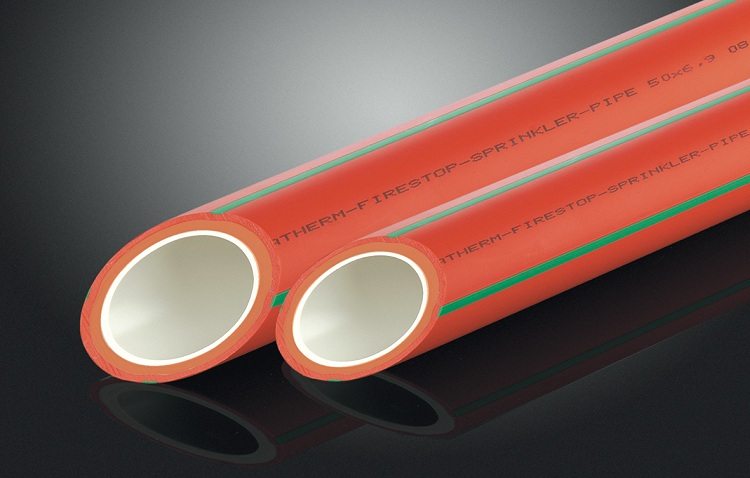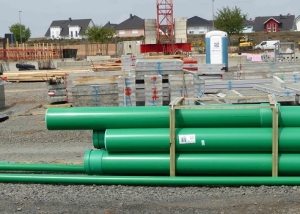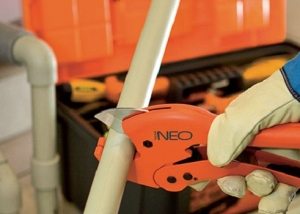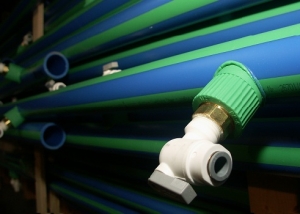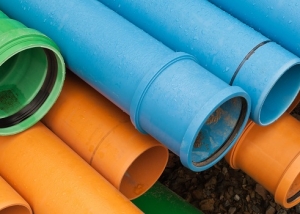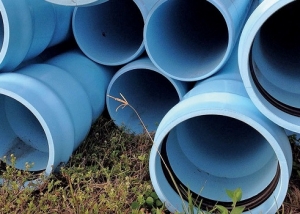Today, installation of water supply and heating systems is carried out mainly using polymer pipes. They all share similar operational characteristics: low heat loss, lack of corrosion, etc. But many home craftsmen prefer polypropylene pipes, since they have a number of advantages over their counterparts. To make the right choice, it is necessary to take into account the type of material used and, of course, the dimensions.
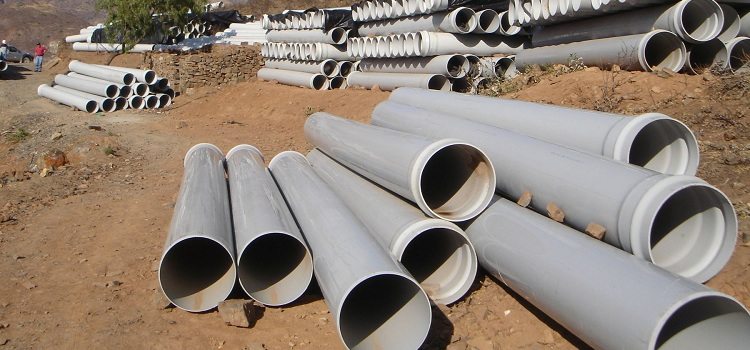
You can choose polypropylene pipes for any type of trunk, this is possible due to the wide range of these products
Content [Hide]
The advantages of polypropylene pipes
These products are increasingly replacing steel pipe products from the plumbing market for many reasons. The main factors are the following:
- corrosion resistance. Due to this property, the transported medium is not polluted, and the service life of the polypropylene line is at least 50 years, while for a steel pipeline this figure does not exceed 20 years;
- increased resistance to chemically aggressive compounds. Metal does not belong to the category of inert substances. Steel is exposed to acids and alkalis, which is another reason for the corrosion process. The high inertness of polypropylene counteracts the entry of this material into reaction with almost all active chemicals;
- frost resistance. It would seem that steel should cope with frost more successfully. But, as practice shows, pipes made from it when freezing liquids in them often burst. In this case, polypropylene products expand at first, and after thawing the water, they take their original shape due to the excellent molecular memory;
- increased biological stability. A high coefficient of roughness of steel creates the conditions for the multiplication of various microorganisms, including pathogenic bacteria. And the smooth inner surface of polypropylene pipes does not allow any contamination to be deposited in their cavity;
- good dielectric properties. This polymer, unlike steel, does not conduct electric current at all. Therefore, the appearance of stray currents detrimental to human health is excluded;
- no additional protection required. It is not necessary to subject the pipes made of polypropylene to anticorrosion treatment, as is the practice with steel products. Moreover, polypropylene pipes do not need to be painted, and if this is done, then only for decorative purposes.
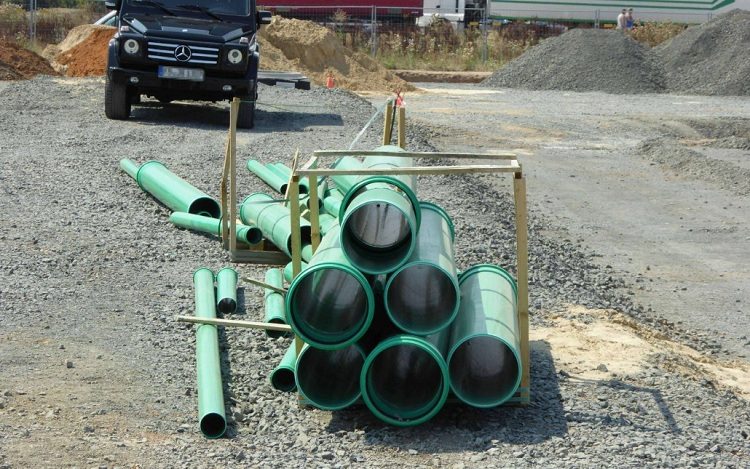
Due to the smoothness of the inner surface of the PP pipes, their throughput does not decrease over time
Polypropylene pipe classification
According to the composition of raw materials, these products, which have received the greatest distribution, are divided into the following groups:
- PPH. Usually these are pipes designed for cold water supply and ventilation systems. Their distinguishing feature is a large diameter.
- PPB Products of this group are characterized by increased impact strength.
Good to know! Therefore, in addition to cold water supply systems, they are used in the arrangement of "warm floors".
- PPR This is the most popular and equally common type of polypropylene pipes. Universality is their main advantage.They are great for organizing both types of water supply systems, not only cold, but also hot. And thanks to the ability to tolerate high temperatures, heating systems are equipped with them.
- PPs. The special molecular structure of the polymer, called polyphenyl sulfide, gives the pipes of this group made from it improved strength and wear resistance, allows them to cope with high temperatures and tolerate mechanical stresses.
There is one more criterion on the basis of which the classification of all similar polymer products, including polypropylene pipes, is carried out. This is the maximum pressure of the working medium transported along the highway. In accordance with it, pipes made of polypropylene are of the following types:
- PN10. Withstand pressure up to 1 MPa. The geometric parameters of this type of pipe fluctuate within the following limits: wall thickness mm, inner diameter mm, and outer diameter. They are used to equip a heated floor with a heating temperature of up to + 45 ° C and in pipelines of cold water supply.
- PN16. This type of pipe products is not widely used. Permissible level of working pressure is 1,6 MPas. It can be used for transportation of cold and hot liquids with a temperature not exceeding + 60 ° C.
- PN20. Highways with a working fluid pressure of up to 2 MPa are created from products of this type. The sizes of polypropylene pipes of this group are as follows:
16 ≤ SArt. ≤ 18.4 mm;
10.6 ≤ Dvn. ≤ 73.2 mm;
16 ≤ DNar ≤ 110 mm.
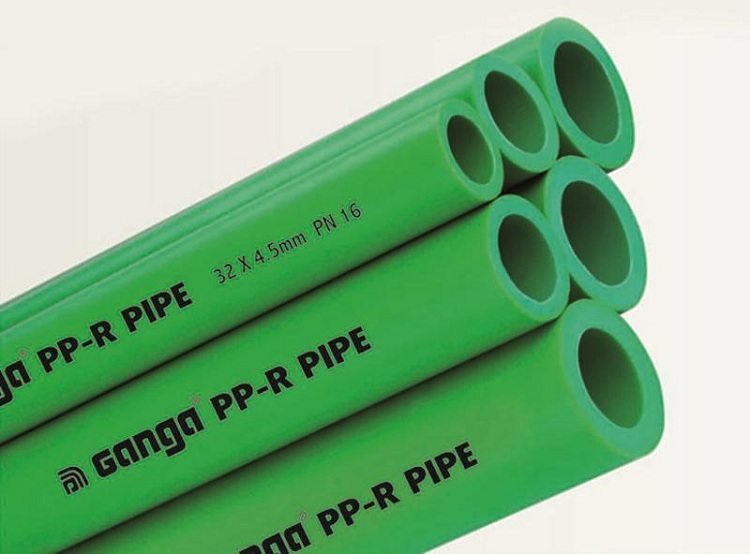
The purpose and properties of pipes are determined by their type, PP-R products are considered universal
PN20 products are the most popular building material for creating cold as well as hot water supply systems with water temperatures up to + 80 ° C.
- PN25. Pipes of this type are reinforced with aluminum foil.
The multilayer structure gives this pipe product increased resistance to thermal and shock loads. This is the most suitable option for arranging heating systems with a coolant temperature of up to + 95 ° C.
Pipes PN25 withstand pressure up to 2.5 MPa. Execution:
- 21,2 ≤ DNar ≤ 77.9 mm;
- 13,2 ≤ Dvn. ≤ 50 mm.
Modern industry has mastered the production of other types of polypropylene pipe products. Above are only the most sought after nomenclature items.
Dimensions of polypropylene pipes: diameter and wall thickness
Large cross-section polypropylene pipe products are used to organize the supply of heating, water and sewage to sports complexes, public buildings, hotels, residential buildings and housing estates, as well as for the needs of modern industry. For example, through drinking water pipes with a diameter exceeding 500 mm, cold drinking water is supplied to the metropolitan areas from storage pools.
Important! Tubular products from polypropylene of large diameter are not used for transporting coolant. This is due to the fact that increased thermal load can cause softening of the polymer line.
The table below shows the dimensional characteristics of some types of polypropylene pipes.
Table 1
| Outer diameter mm | PN30 | PN20 | PN10 | |||
| Wall thickness | Inner diameter | Wall thickness | Inner diameter | Wall thickness | Inner diameter | |
| 110 | 18,4 | 73,2 | 10 | 90 | ||
| 90 | 15 | 60 | 8,2 | 73,6 | ||
| 75 | 6,90 | 50,0 | 12,50 | 50,0 | 6,90 | 61,20 |
| 63 | 5,80 | 42,0 | 10,50 | 42,0 | 5,80 | 51,40 |
| 50 | 4,60 | 33,20 | 8,40 | 33,20 | 4,60 | 40,80 |
| 40 | 3,70 | 26,60 | 6,70 | 26,60 | 3,70 | 32,6 |
| 32 | 3,0 | 21,20 | 5,40 | 21,20 | 3,0 | 26,0 |
| 25 | 4,20 | 16,60 | 4,20 | 16,60 | 2,30 | 20,4 |
| 20 | 3,40 | 13,20 | 3,40 | 13,20 | 1,90 | 16,2 |
| 16 | 2,7 | 10,6 | ||||
A few words about the length of polypropylene pipes. Today, manufacturing plants produce products with a standard length of 6 meters. Everything else is considered to be sliced or waste.
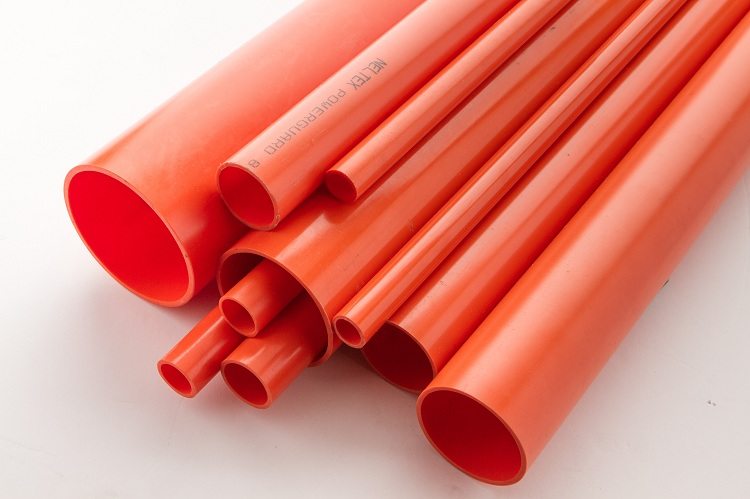
Pipes with a diameter of up to 50 mm are suitable for house networks, and larger products are used for the installation of external highways
Why reinforcement is needed
The need for this operation is that the dimensions of polypropylene pipes increase with increasing temperature of the working medium.A change in geometric parameters can cause depressurization of the line at the junction of its elements. In addition, wiring is complicated. This disadvantage is especially evident in heating systems, as well as hot water supply. Exactly reinforced polypropylene pipe allows you to create a truly reliable hot water supply pipe.
The reinforcement procedure itself is performed in the following ways:
- aluminum foil is laid inside the pipe wall;
- the inner surface of the product is covered with an additional layer of polyethylene;
- fiberglass reinforcement. In the manufacturing process, this material is sintered with polypropylene, so that the final product is a monolithic structure.
The latter type of reinforcement of products is most widespread not only because the dimensions of the polypropylene pipe, as professional plumbers say, “do not go around”. Experts also refer to the advantages of fiberglass reinforcement as the factor of simple installation of the trunk. Monolithic pipe easily exposed soldering. Therefore, tubular products reinforced in this way are specially purchased for areas where they are often to be assembled / disassembled using cutting.
However, the increased ductility of this design makes some adjustments to the scope of use of fiberglass reinforced pipes. So, experienced home craftsmen equip long and straight sections of water supply systems with products reinforced with a layer of aluminum. Excessive ductility also forces manufacturers to limit the diameter of fiberglass pipes. The limit value of this parameter for such products is 63 m. At the same time, products reinforced with aluminum foil can have a double diameter.
Advice! To create a reliable pipeline, purchase pipe products with various characteristics. Their combination will minimize the impact of existing shortcomings on the performance and durability of the highway.
True, one could not do without one here - the ratio of the quality of pipes to the amount of fiberglass. Relying only on an external examination is not worth it: only mechanical impact will allow to identify flaws. Professionals recommend testing the strength of the selected pipe in the most direct way - to hit it several times with a piece on the ground or column (of course, the force of impact should be within reasonable limits). A product of dubious quality may crack or just scatter into pieces.
You can obtain more detailed data on the quality of the reinforced tubular product using a microscope. If a truly high-quality fiberglass was used, when magnified, the thick and long fibers of the material tightly adjacent to each other, forming a continuous chain, will be visible. Broken, somehow scattered fibers, between which there is a lot of free space, are a sign of poor-quality products.
In addition to the design of the products, one should carefully approach the choice of the size of the PP pipe - its diameter should be such that the volume of water required per unit time (second, hour, day) is freely transported along the highway.
The dimensional characteristics of polypropylene pipes should be considered as one of the main factors determining the degree of efficiency of the heating and water supply systems. Any, even the smallest mistake, can nullify the installation effort and even lead to an emergency.
